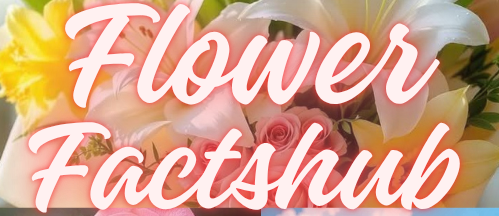There’s something magical about May. It’s that golden moment when spring is in full swing, the days are longer, the air is softer, and gardens everywhere seem to explode in color and fragrance. After months of cold and gray, May flowers arrive like a reward a gentle reminder that life, even in its quietest dormancy, is always preparing for its next beautiful season.
You’ve probably heard the old rhyme, “April showers bring May flowers.” And while it’s become a bit of a cliché, there’s a whole lot of truth packed into that little line. The rains of early spring nourish the earth, wheedling seeds and bulbs out of their slumber. Then, when May rolls around, we get to witness the payoff a colorful parade of blossoms that turn yards, parks, and wild fields into living artwork.
But May flowers aren’t just a treat for the eyes. They represent so much more: growth, renewal, celebration, and hope. Whether you’re an experienced gardener or just someone who loves stopping to smell the roses literally May is the perfect time to dive into the beauty and meaning behind spring’s most iconic blooms.
In this post, we’ll take a closer look at the flowers that define the month of May, including their symbolism, history, and cultural significance. We’ll also dig into practical gardening tips because if you’re itching to bring that beauty into your own backyard (or even just a balcony planter), there’s no better time to start than now.
So grab your gardening gloves (and maybe a cup of something warm), and let’s celebrate the sights, scents, and soul-soothing magic of May flowers together.
Why Symbolism Matters in Your Garden (and Your Life)?
Knowing the symbolic meaning of May flowers can deepen your connection to gardening and nature. You’re not just planting seeds or picking blooms you’re creating a living space that reflects your intentions, emotions, and personal story.
Whether you want to express love, invite peace, encourage new beginnings, or honor a memory, May flowers give you the perfect way to do it naturally and beautifully.
In fact, designing your garden around symbolism can even transform how you experience your outdoor space. Imagine stepping into your backyard and being surrounded by blossoms that represent healing, hope, or joy it’s like growing a living journal of your heart.
The Significance of May Flowers: More Than Just Pretty Petals
May flowers aren’t just beautiful to look at they’re symbolic, storied, and deeply rooted (pun intended!) in cultural traditions, folklore, and emotional meaning. If April is the month of anticipation, May is the moment of bloom. It’s nature’s grand reveal after months of quiet preparation underground.
There’s something deeply human about the cycle of planting, waiting, and finally, blooming and May flowers embody that journey.
A Symbol of Renewal and Hope
One of the most universal meanings behind May flowers is renewal. Think about it: after winter strips the world of color, spring slowly tiptoes in with tiny green buds. Then comes May bursting onto the scene like a celebration of life itself.
Flowers that bloom in May often symbolize new beginnings, hope, and fresh starts. Whether you’ve been through a hard season in your life or are simply ready for change, May flowers remind us that growth is always possible, even after the coldest stretch. That in itself is incredibly powerful.
A Month of Celebration and Tradition
Across cultures, flowers that bloom in May play starring roles in festivals, rituals, and celebrations. From May Day flower crowns to Mother’s Day bouquets, these blossoms are about more than just aesthetics they’re messengers of emotion, appreciation, and love.
- May Day (May 1st): An ancient celebration of spring where flowers are used to honor fertility, life, and joy. In many traditions, people leave small baskets of fresh flowers on neighbors’ doorsteps as a simple, lovely gesture of kindness and community.
- Mother’s Day: Let’s be honest, no Mother’s Day bouquet would feel complete without the bright, cheerful colors of May blooms. Carnations, peonies, and tulips all bloom beautifully in May and each carries its own sweet symbolism of gratitude, nurturing, and affection.
The Language of May Flowers
Believe it or not, flowers speak their own language. Back in the Victorian era, people often used blooms to say what words couldn’t an entire “language of flowers” (also known as floriography) was created to express feelings through petals.
For example:
- Lily of the Valley, one of May’s birth flowers, represents humility, sweetness, and the return of happiness.
- Hawthorn, the other official May flower, symbolizes hope and protection, and is often associated with love and marriage.
- Peonies, which are also at their peak in May, represent romance, prosperity, and a happy life.
Each bloom that arrives in May has a meaning, a personality, a story. And when we pause to really notice them not just as decorations, but as expressions it makes the season feel even more alive.
A Personal and Emotional Touch
Many of us associate certain flowers with specific memories a grandmother’s garden filled with irises, a childhood backyard where lilacs bloomed, or the bouquet from a first love. May, with its floral abundance, often brings these memories flooding back.
That emotional connection makes May flowers more than just seasonal flora. They’re living reminders of joy, resilience, nostalgia, and love. They ground us in the present while gently tugging at the past.
In short, the significance of May flowers goes far beyond their surface beauty. They’re symbols of life’s cycles of patience, of joy after hardship, of love expressed through nature’s own language. They mark the middle of spring, a time when the world feels full of potential and possibility. Whether you’re planting them, picking them, or just admiring them as you walk down the street, May flowers are an invitation to slow down and savor the moment.
The Symbolism of May Flowers: What These Blooms Really Mean
May flowers do more than brighten up gardens and vases they tell stories, carry emotions, and express ideas that words sometimes can’t. Every petal, color, and bloom that shows up in May arrives with symbolic meaning that’s been passed down through generations. From ancient traditions to modern-day celebrations, these spring blossoms speak a universal language of hope, love, purity, and renewal.
Let’s take a closer look at the deeper symbolism behind the most beloved May flowers and what they might be saying without ever speaking a word.
1. Lily of the Valley: The Return of Happiness
One of the official birth flowers of May, the Lily of the Valley is small, delicate, and unassuming but its meaning is powerful. These bell-shaped white flowers symbolize purity, humility, sweetness, and most poetically, “the return of happiness.”
This symbolism is rooted in both Christian lore and European folklore. In many traditions, the Lily of the Valley blooms after a long, dark winter, representing joy and serenity after sorrow or hardship. It’s a flower often given during major life transitions like weddings and births because it carries the promise of peace, healing, and better days ahead.
Why it matters: In a world that constantly moves, this flower gently reminds us to pause, take a breath, and find comfort in small joys.
2. Hawthorn : Hope and Protection
The other birth flower of May, Hawthorn, is a unique flowering shrub with white or pink blossoms and thorny branches. Despite its prickly exterior, it symbolizes hope, protection, and love. In Celtic and Druidic traditions, Hawthorn trees were sacred, believed to guard entrances to the fairy world and protect against negative energy.
Because it blooms in May, Hawthorn became a seasonal symbol of rebirth, passion, and transformation especially in matters of the heart. It’s also been used in bridal wreaths and fertility rituals, reinforcing its connection to love, life, and new beginnings.
Why it matters: The Hawthorn’s symbolism reminds us that even things with thorns can protect and nurture. It’s about strength in softness.
3. Peony: Romance, Prosperity, and Good Fortune
Peonies, which reach full bloom in late spring, are considered one of the most luxurious and emotionally rich flowers of May. In Chinese culture, they’re known as the “king of flowers” and symbolize wealth, honor, romance, and beauty. In Western traditions, peonies represent bashfulness, compassion, and a happy marriage.
Their full, round shape and layers of petals make them a favorite in wedding arrangements and celebration bouquets. Giving someone peonies in May expresses deep admiration and a wish for abundance in their life.
Why it matters: Peonies don’t just symbolize love they represent lasting love, built on trust and harmony.
4. Daisy: Innocence and Fresh Starts
Daisies might look simple, but their meaning is anything but plain. These cheerful white flowers, often with sunny yellow centers, bloom freely in May and symbolize innocence, purity, and new beginnings.
The daisy’s shape a circle of petals around a bright core also carries connotations of the sun, suggesting positivity and energy. In Norse mythology, the daisy was sacred to Freya, the goddess of love and fertility, reinforcing its connection to motherhood and renewal.
Why it matters: Whether you’re starting something new or needing to let go of the past, daisies symbolize the strength of optimism and the beauty of beginnings.
5. Tulip: Perfect Love and Elegance
While tulips start blooming in April, they often hit their stride in early May, filling gardens with vibrant colors. Symbolically, tulips stand for perfect, unconditional love, making them a popular flower for both romantic partners and family members.
Different colors of tulips carry different messages:
- Red tulips: Deep love and passion
- Yellow tulips: Cheerful thoughts and sunshine
- Pink tulips: Affection and caring
- White tulips: Forgiveness and purity
Why it matters: A May bouquet filled with tulips isn’t just pretty it’s packed with emotional intent and loving energy.
6. Marigold (Calendula): Joy and Sunshine
Though more commonly associated with summer and fall, Calendula (often called marigold) can start to bloom in late May, depending on your climate. Its golden-orange flowers symbolize warmth, joy, creativity, and healing.
In ancient times, marigolds were used in rituals and medicine, thought to bring health and happiness. Their bright color makes them a favorite in May gardens that aim to lift the spirit and energize the space.
Why it matters: Marigolds are the ultimate “good vibes” flowers they encourage healing, creativity, and emotional clarity.
Final Thoughts
The symbolism of May flowers runs deep, offering us not only beauty but wisdom. As you walk past blooming gardens or arrange flowers in a vase, take a moment to consider what they’re quietly saying. Maybe they’re reflecting how you feel or maybe they’re reminding you of something you’ve forgotten: that life is always changing, always growing, and always blooming again.
Whether you’re planting for meaning or simply enjoying the view, remember this flowers don’t need to speak to be understood. Their symbolism says it all.
Creating a Butterfly-Friendly Garden in May: Turn Your Yard into a Pollinator Paradise
There’s something almost magical about watching butterflies flutter through a blooming garden. Their delicate wings, vibrant colors, and graceful movements add a whole new layer of life to any outdoor space. But butterflies don’t just bring beauty they also play a crucial role in our ecosystem by pollinating flowers and supporting biodiversity.
May is the perfect time to create a butterfly-friendly garden.
The weather warms up, flowers begin to bloom in abundance, and butterflies emerge from their cocoons, ready to feed, mate, and lay eggs. With just a few thoughtful choices, you can turn your yard or balcony into a welcoming habitat for these gentle garden guests.
Let’s walk through exactly how to do that step-by-step, in a way that feels simple, natural, and totally rewarding.
Step 1: Understand What Butterflies Need to Thrive
Before you start planting, take a moment to think like a butterfly (yes, really). What do they actually need? Here’s the basic checklist:
- Nectar sources (for adult butterflies to feed on)
- Host plants (for caterpillars to hatch and grow)
- Shelter (from wind and predators)
- Sunlight (to help regulate body temperature)
- Water or damp areas (for hydration and mineral intake)
When you include all of these elements in your garden, you give butterflies more than a snack bar you give them a place to live, grow, and come back to year after year.
Step 2: Plant Nectar-Rich Flowers That Bloom in May
Butterflies love flowers that are rich in nectar especially those with bright colors like purple, pink, red, orange, and yellow. The more variety you offer, the more butterfly species you’ll attract.
Here are some top nectar plants that bloom in or around May:
Butterfly Favorites for May:
- Lantana : butterfly magnet with clusters of vibrant blooms.
- Milkweed (Asclepias): Essential for monarchs. It’s both a nectar plant and a host plant.
- Coneflower (Echinacea) :Tall, showy, and loved by pollinators.
- Zinnias :Easy to grow and endlessly colorful.
- Verbena : Great for containers and attracts butterflies like crazy.
- Salvia : Drought-tolerant and bursting with color.
Pro Tip: Mix heights and colors to appeal to different types of butterflies. Think of your garden like a buffet the more options you have, the more guests you’ll attract.
Step 3: Add Host Plants for Caterpillars
Here’s where most people stop short they plant nectar flowers for adult butterflies, but forget about the next generation. If you want butterflies to lay eggs and stick around, you need to offer host plants for their caterpillars.
Each butterfly species lays eggs on specific plants. These are where their babies (the caterpillars) will hatch and feed.
Common Host Plants:
- Milkweed: Again, a must for monarchs.
- Parsley, Dill, and Fennel : Loved by swallowtail butterflies.
- Violets: Host plants for fritillary butterflies.
- Snapdragons and Plantain : For buckeye butterflies
Yes, caterpillars will munch on the leaves, but that’s a good thing it means your garden is doing exactly what it’s supposed to.
Step 4: Make Space for Sunbathing
Butterflies are cold-blooded, so they need sunlight to warm up and get moving. Make sure your garden gets at least 4–6 hours of sun per day, especially the areas with nectar plants.
You can also help butterflies sunbathe by placing a few flat rocks or stepping stones in sunny spots. Butterflies love to land there, stretch their wings, and soak in the warmth.
Step 5: Provide Water in a Butterfly-Friendly Way
Butterflies don’t drink from birdbaths or deep bowls their delicate bodies can’t handle it. Instead, they “sip” from shallow puddles or moist soil, a behavior known as puddling. This helps them stay hydrated and absorb minerals they can’t get from nectar alone.
Here’s a quick DIY:
- Fill a shallow dish or saucer with sand.
- Add water until the sand is moist but not flooded.
- Place it in a sunny, sheltered spot.
- Refresh the water regularly.
You can even add a few flat pebbles for butterflies to perch on while they drink. It’s a small detail that makes a big difference.
Step 6: Skip the Chemicals
This one’s big. Avoid using pesticides or chemical fertilizers, even the “natural” or “organic” ones. Many of them can harm butterflies (and bees) at all stages of life eggs, larvae, and adults.
Instead:
- Use compost or leaf mulch to feed your soil.
- Attract natural predators like ladybugs to control pests.
- Handpick harmful bugs if needed it’s worth the extra effort to keep your butterfly guests safe.
Step 7: Use Containers if You Don’t Have a Yard
No garden? No problem. You can absolutely create a butterfly haven on a balcony, patio, or porch using containers.
Here’s how:
- Choose compact plants like verbena, zinnias, or dwarf milkweed.
- Use a mix of container sizes and heights.
- Group the pots together to create a mini “garden effect.”
- Place them where they’ll get at least 4 hours of sunlight.
Even a few containers can attract butterflies they’re not picky as long as you provide the essentials.
Bonus: Think Beyond the Flowers
Butterflies also love:
- Overripe fruit (place it in a shallow dish near flowers)
- Native grasses (great for shelter and camouflage)
- Unmowed garden edges (let nature be a little wild)
And don’t be afraid to leave a few weeds! Dandelions, clover, and plantain are excellent early nectar sources.
Your May Garden, Reimagined: A Place for Pollinators and Peace
Creating a butterfly-friendly garden in May isn’t just about attracting winged visitors it’s about building a space that’s alive, responsive, and connected to nature. It’s about slowing down and noticing the way life thrives when you nurture it with intention.
As you watch butterflies flutter through your flowers, you’ll feel a quiet joy that no screen or gadget can offer. There’s something deeply healing about sharing your space with wild things especially the gentle, glowing grace of butterflies.
So go ahead plant with purpose this May. Create a garden that welcomes not just beauty, but balance. And get ready for a season full of color, pollinators, and peaceful moments you won’t want to miss.
Frequently Asked Questions (FAQs)
Q1: What are the best flowers to plant in May for instant color?
Popular May flowers include tulips, pansies, peonies, marigolds, petunias, and irises, all of which offer vibrant blooms and cheerful color.
Q2: Do May flowers bloom throughout the summer?
Many May-blooming flowers, like marigolds and petunias, continue blooming into late summer with proper care and deadheading.
Q3: Can I grow May flowers in containers?
Yes, most May flowers do well in containers or pots, especially pansies, geraniums, and begonias, as long as they get enough sun and water.
Q4: Which May flowers are the most fragrant?
Flowers like peonies, lilies of the valley, and dianthus bloom in May and are known for their sweet, uplifting scents.
Q5: Are May flowers easy to grow for beginners?
Absolutely! Flowers such as zinnias, cosmos, and marigolds are perfect for beginners due to their hardiness and minimal care needs.



